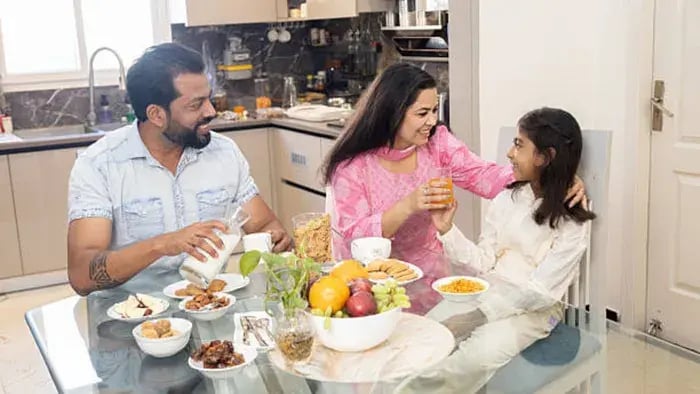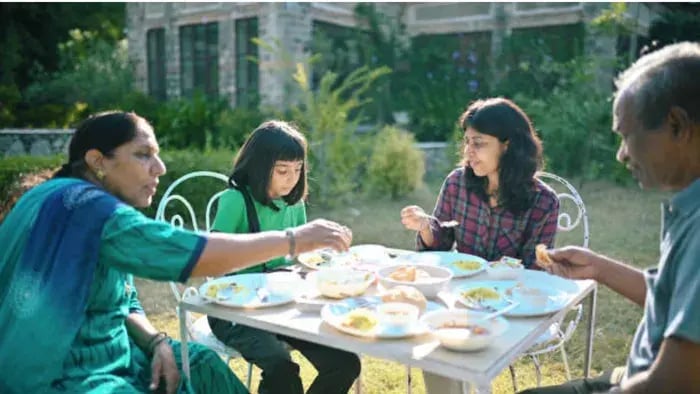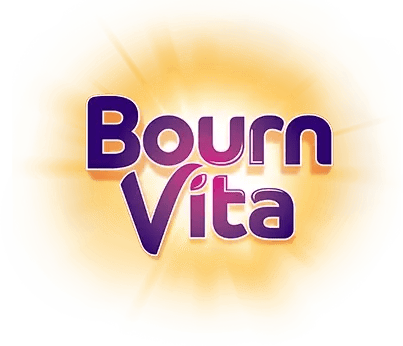- Roasted Chana (Bengal Gram)
- Curd (Dahi)
- Pumpkin Seeds
- Toor Dal (Arhar Dal)
- Cashews (Kaju)
- Palak (Spinach)
- Rajma (Kidney Beans)
Introduction

Zinc is one of those silent nutrients that doesn’t get the attention but plays a significant role in keeping your child healthy and alert. It supports the immune system, helps in wound healing, and is essential for brain development and memory. For growing kids, getting enough zinc every day can make a significant difference in how their body fights infections, their mental acuity in class, and their ability to recover from play.
Since the body doesn’t store zinc, it’s essential to include it in the daily diet. The good news is that there are many simple and tasty foods, especially in Indian kitchens, that provide this essential mineral. From pulses and seeds to dairy and grains, a balanced Indian meal can give your child the zinc boost they need without relying on supplements or fortified foods.
Choosing the right zinc-rich ingredients also brings along other nutrients like iron, protein, and healthy fats that support overall growth. Whether it’s a spoonful of roasted chana, a bowl of curd, or a handful of pumpkin seeds, small everyday choices can build a strong foundation for energy, focus, and resilience. By making zinc a part of your child’s plate, you are helping them grow smarter, stronger, and more protected.
Top 7 Zinc-Rich Foods for Kids: Boost Immunity and Brain Power

Zinc is an essential mineral that plays a vital role in your child’s development, immunity, and brain function. Since the body doesn’t store zinc, it’s important to include it regularly in everyday meals. Luckily, Indian kitchens are full of simple, traditional foods that are naturally rich in zinc. Whether it’s helping your child concentrate better in school or bounce back quickly after a cold, zinc quietly supports all these important processes.
Here are seven everyday Indian foods packed with zinc to help your child stay healthy and focused.
Roasted Chana (Bengal Gram)
According to the Dietary Guidelines for Indians, roasted chana is an excellent zinc-rich snack that’s easy to carry, non-messy, and loved by kids for its crunch. Along with zinc, it provides protein and dietary fibre, helping with satiety and digestion. It’s especially useful for evening hunger pangs and can even be added to bhel or salads.
Curd (Dahi)
According to the study published in Indian J Med Res. 2014, curd is not just soothing and cooling but also a natural source of zinc and probiotics. It helps balance gut flora, which is directly linked to better immunity and digestion. Zinc in curd supports enzyme function and tissue healing. You can give curd plain, sweetened with fruits, or in the form of lassi or buttermilk.
Pumpkin Seeds
As per the FSSAI, pumpkin seeds or kaddu ke beej are one of the richest plant-based sources of zinc. Just a tablespoon a day can help meet daily zinc needs. You can roast them lightly and mix with trail mix, add them to porridge, or sprinkle on fruit bowls. Along with zinc, they also offer magnesium, protein, and healthy fats, supporting not just immunity but also better sleep and brain health.
Toor Dal (Arhar Dal)
Research conducted by, Nutr Rev. 2012, suggests that toor dal is a staple in many Indian homes and is a reliable source of zinc for vegetarians. It also contains iron and folate, making it an excellent food for overall development. Zinc in dal supports brain signaling, which is crucial during the learning years.
Cashews (Kaju)
Research done by Foods. 2023, cashews are kid-friendly nuts that are not only tasty but rich in zinc and healthy fats. They support brain development and immune response. You can serve them soaked, dry-roasted, or powdered into laddoos or chutneys. They also make a great addition to breakfast dishes, such as poha or upma. Just a small portion of daily food goes a long way in fulfilling your child’s zinc requirement.
Palak (Spinach)
A study done by the National Institutes of Health states that spinach offers a good amount of zinc, along with several other important nutrients. Lightly cooking it increases its digestibility and makes it easier for your child to absorb zinc. You can serve it in parathas, soups, or even blend it into dosas and cheelas.
Rajma (Kidney Beans)
As per the CCRH, rajma is not just a source of plant protein but also contains a decent amount of zinc. Its fibre content aids digestion, while the zinc supports immune function and brain clarity. Soaking it overnight and cooking it well improves its nutritional availability. Serve it with rice and a veggie side for a complete, zinc-rich meal.
Conclusion

Feeding your child zinc-rich foods doesn’t have to be complicated. These seven Indian staples are not only easy to find but also versatile and kid-approved. Including them regularly in your child’s meals can support stronger immunity, sharper focus, and healthier growth. Whether it’s roasted chana as a snack or a bowl of dal at lunch, every bite counts towards building lifelong wellness.
Her love for storytelling began with reading her grandfather’s speeches, where Tarishi saw the power of words in creating lasting memories. Combining her passions for food and writing, she has turned her life into a fulfilling path of sharing stories that celebrate flavours and how food brings communities together.
The views expressed are that of the expert alone.
The information provided in this content is for informational purposes only and should not be considered a substitute for professional medical advice, diagnosis, or treatment. Always seek the advice of your physician or another qualified healthcare provider before making any significant changes to your diet, exercise, or medication routines.
References
https://www.ccrhindia.nic.in/WriteReadData/LINKS/Compendium0c3fc504-fd77-45ab-9148-2407a787276c.pdf
https://ods.od.nih.gov/factsheets/Zinc-HealthProfessional/
https://pmc.ncbi.nlm.nih.gov/articles/PMC10000569/
https://pmc.ncbi.nlm.nih.gov/articles/PMC3146027/
https://www.fssai.gov.in/upload/uploadfiles/files/Compendium_Nutra_29_09_2021.pdf
https://pmc.ncbi.nlm.nih.gov/articles/PMC4248380/
https://www.nin.res.in/dietaryguidelines/pdfjs/locale/DGI24thJune2024fin.pdf
















